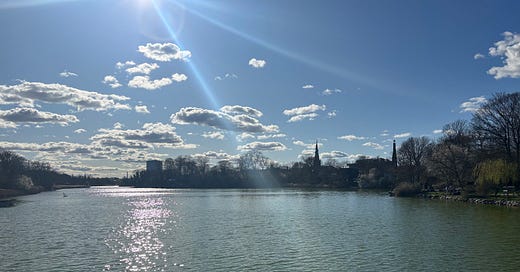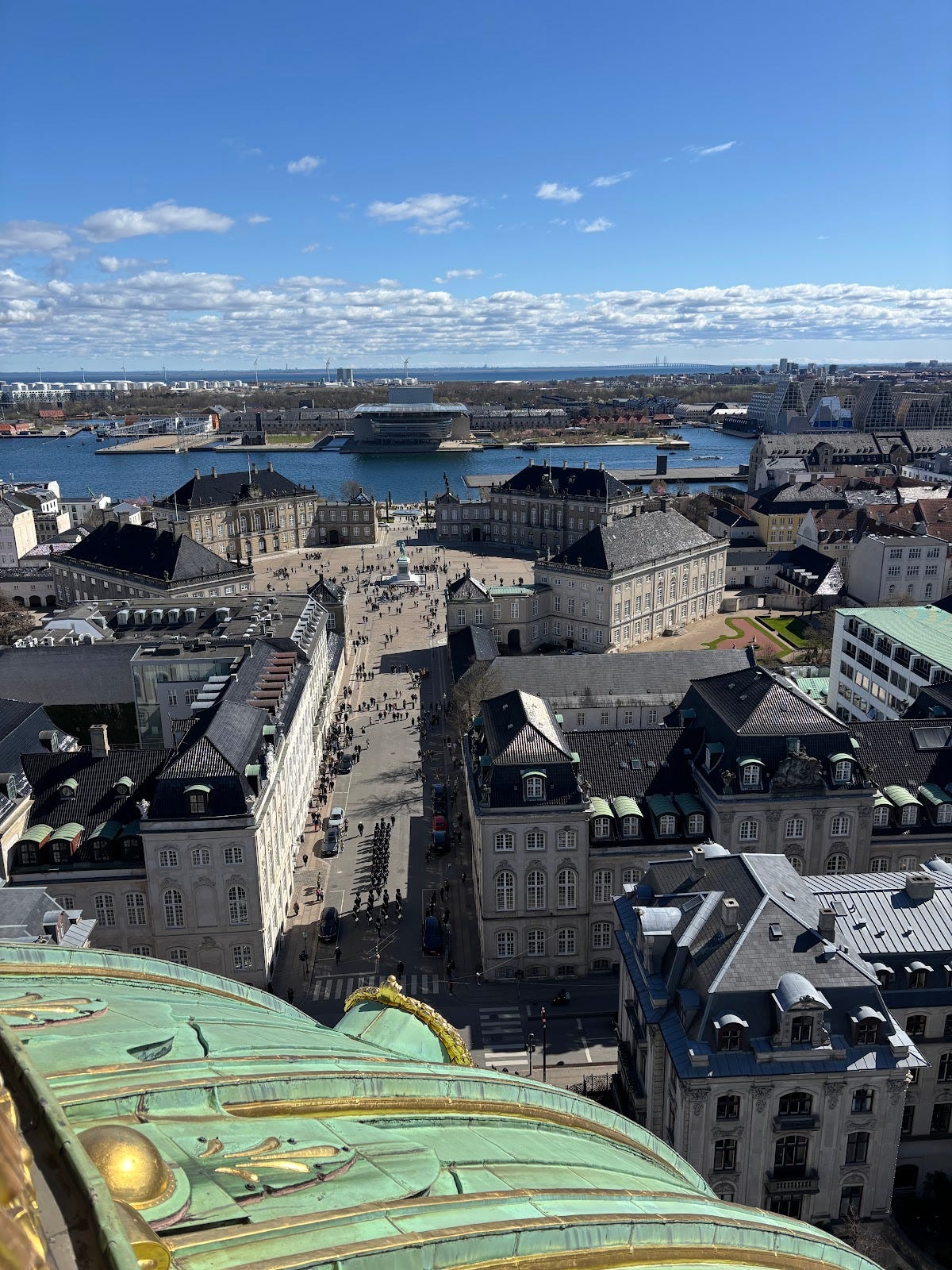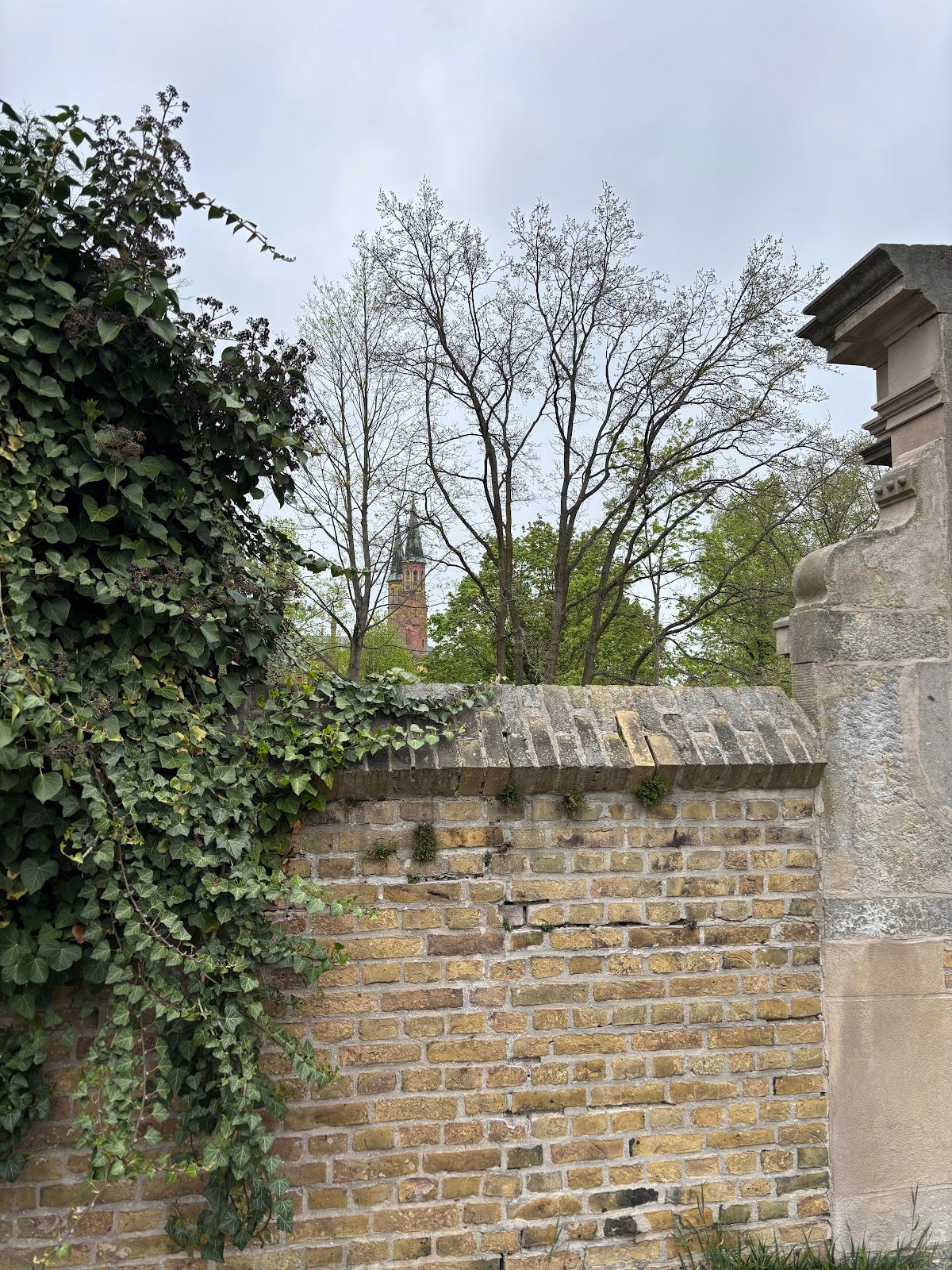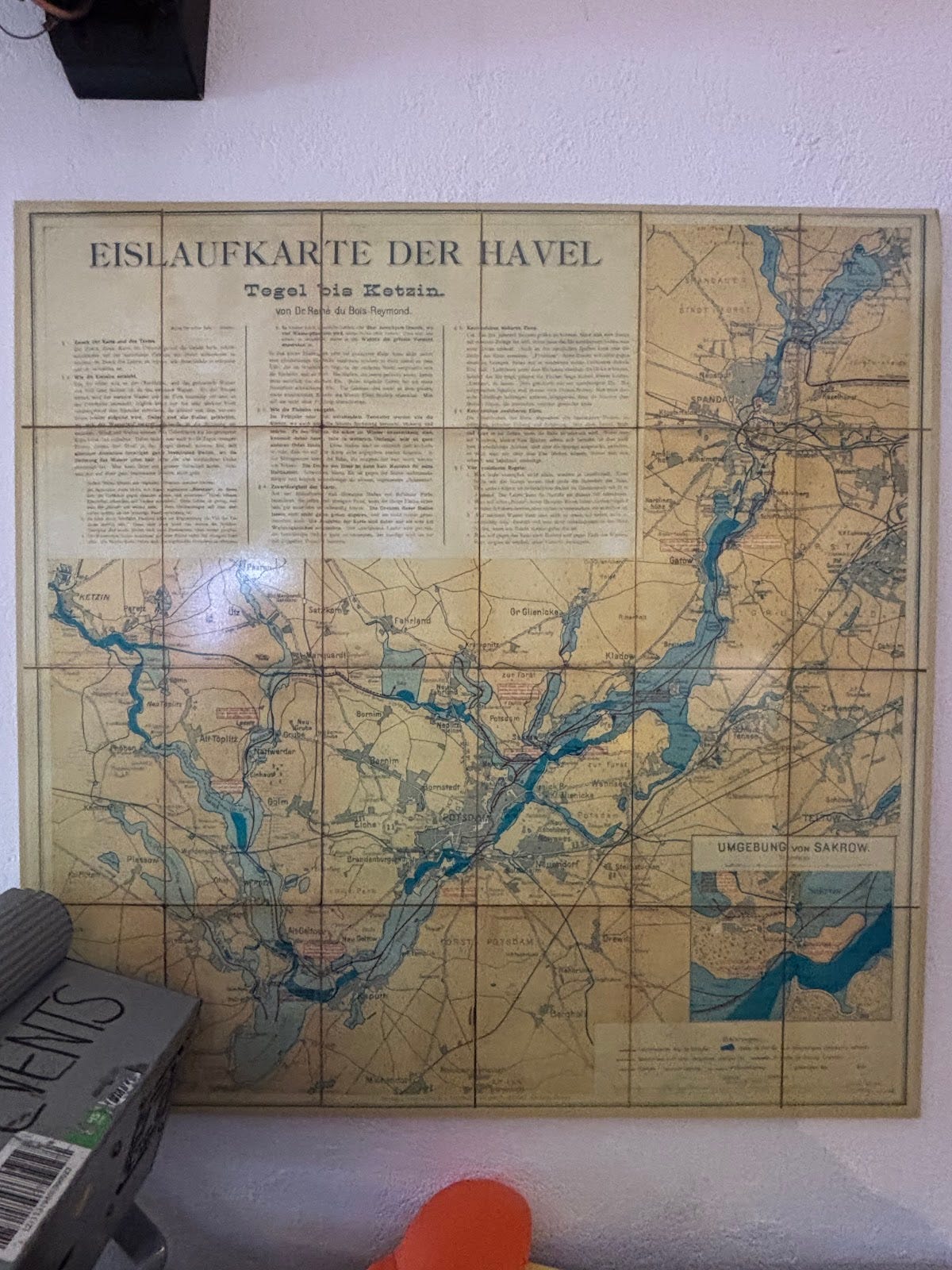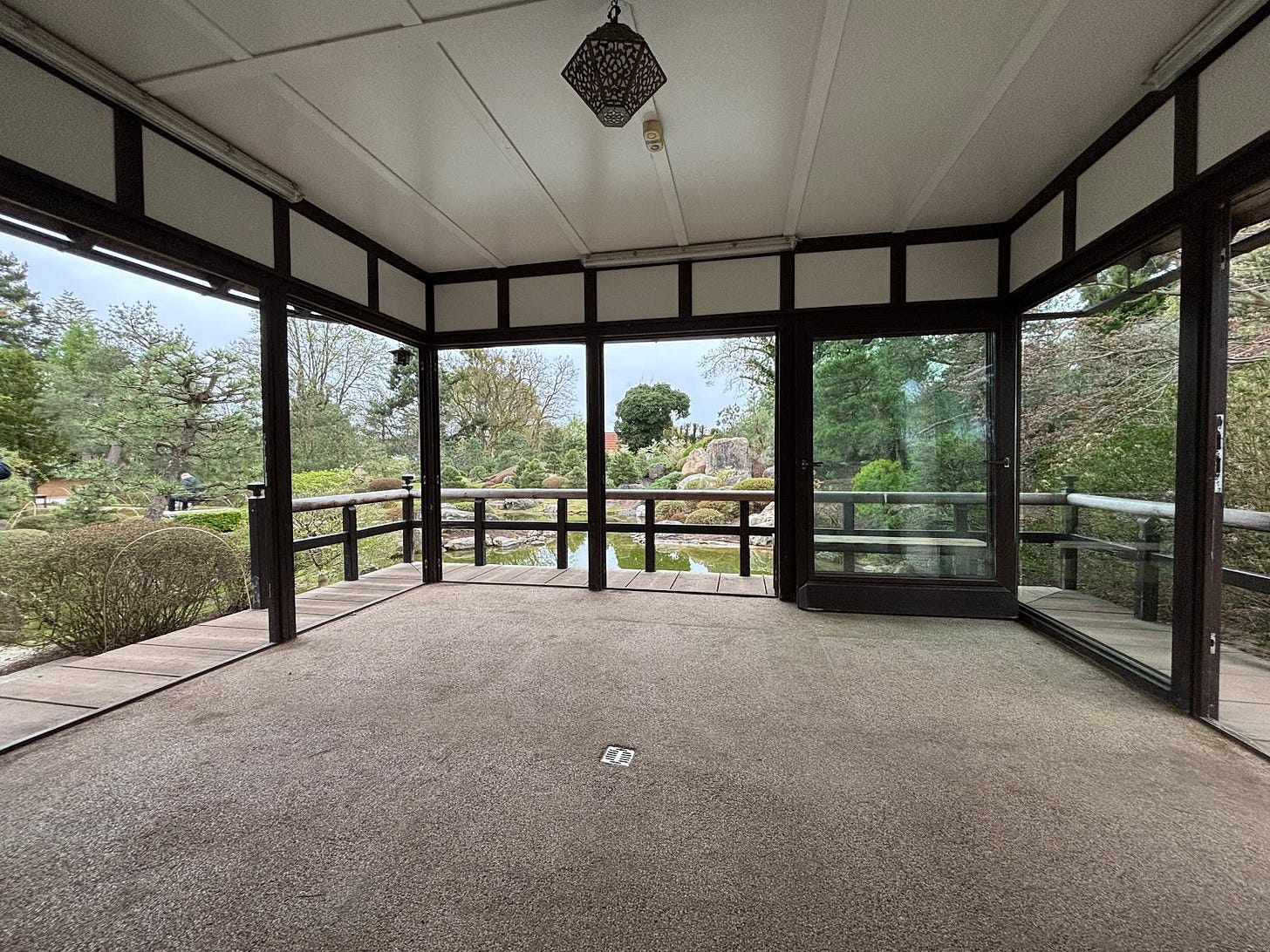Renewal, and Overlooking
Welcome to the fourth edition of Connecting Climates. I’m glad to have reached a fourth edition, less because 4 of anything is a particular milestone (except in a best-of-7), more as a testament to the friendly encouragement from all of you.
I do think you’ll enjoy it. We have a couple trips by train, others by print, and some delicious food.
A note on overlooking our world
I’m intentional in not devoting the entirety of my excess attention to what’s happening in America right now. It’s avoidance to some degree, a mix of that starting climate change in the face kinda energy and wanting to just hide underneath a blanket somewhere, simmering anger, and shame, particularly as the pace of anti-American digs abroad starts to accelerate.
Here’s my inbox’s unread emails from a couple weeks ago. They all point to the times:
It’s not that I’m completely disengaged from the tsunami, or that I ignore everything. The time and place for them can’t be, well, constantly. Many of these kinds of issues are just too much to bear. The prospect of Trump’s tariffs accelerating Amazonian deforestation, Elise Stefanik in the NY Governor’s Office, U.S. state terror being unleashed unto Americans, Russian attacks, and the bond market are all things you can’t just click unread on as if they’re news acknowledged. They each require a healthy sit down to warp your head around what the fuck just happened.
So I return to another edition of Connecting Climates by acknowledging this partial disconnection, and that I doubt anyone has “figured out” how to stay sane while committing not to overlook things in your sphere of awareness. I don’t think overlooking things that you’re aware of, as well as reducing your curiosity as a means by which to limit your exposure, is a responsible way to navigate the world. Whether there’s a line between that and self-preservation is something I’m trying to discover.
Climate 1: The Danish Police State
Menacing Royal Guards parade through town (Credit: Annoying tourist leaning over the railing)
I love being back in Copenhagen, where I had gone on exchange and close friends of mine now call home. Nothing beats quality time with your people, plain and simple.
This trip was short and sweet, sandwiched by a couple of scenic 7-hour train rides (that were shockingly punctual) up via Hamburg to Jutland, then crossing the Danish islands by bridge. My favorite bit is this massive, elevated steel causeway loop around the entire town of Rendsburg that allows for a sufficiently high bridge over a shipping canal; evidently, German engineers got a little carried away.
When you think of Copenhagen, and Denmark, it’s easy to drift into visions of utopia, überfunctionality, cleanliness, hygge… you get the idea. But there is a dark side, of the mandating school lunches have pork out of national pride + Muslim migrant repellent variety.
On the train ride up, a bit after crossing the aforementioned loop bridge in Rendsburg, trains cross the border (as one would expect), upon which Danish police then board the train for immigration checks (as one might not expect in the EU). On a previous trip, I saw an asylum seeker forced to leave the train at the border; we also personally know a couple forced to live in Sweden because the Danish government won’t let the foreign-born spouse live in Copenhagen.
This time around, we witnessed a Swiss family do literally everything conceivable wrong; it was almost as if they dared Denmark not to let them in. The mom didn’t have her international ID (proudly non-EU Swiss having their cake and eating it too?) and needed an explainer from the border policeman as to what IDs she needed while traveling abroad. The teenage son didn’t have any ID on him at all. They brought their dog, but no vaccine record. The Swiss held up the train for 10 minutes, in conversations with the border police flexing their ignorance with glaringly little awareness and respect for crossing into another country’s territory (the mom didn’t think to say thank you to the very understanding border policeman until prompted by her rosy-cheeked husband).
You know where this story ends: after many moments of suspense, the Swiss were allowed to pass through anyway. We were mystified and second-hand outraged, knowing what many people crossing a border on earth today would have experienced, and curious what they would be thinking watching the Swiss, of all people, get off without a scratch. On the one hand, it was a nice human touch for the officers not to ruin this family’s vacation; on the other, if the world doesn’t have free borders, especially when Denmark’s pretty militant about its own, how’s that for a holy double standard? I, of course, say this from a hilariously privileged point of view of having American and German passports, and as a relatively benign-looking white guy whose presence apparently isn’t deemed threatening by security personnel.
Meanwhile, ICE has started detaining American citizens (told you I’m not completely disconnected!).
After some galavanting about the night before, a cinnamon roll, brunch, and a mandatory hot dog wrapped in bacon, I took my girlfriend to Christiania, perhaps the only place I feel constantly able to acknowledge reality when visiting utopian CPH. It sounds backwards, but hear me out.
For those unfamiliar, Christiania is a commune of roughly 2,000 residents active since 1970, having successfully squatted in former military barracks and the surrounding waterfront of Christianshavn. Relations with the police and Danish state have been… tense. It inspired fellow communal living efforts (Berlin’s Køpi makes said inspiration pretty clear), particularly with its policies, stance that it is separate from the EU, and open, fun mantra.
Christiania also had the reputation where one could buy certain green products in a country where such green products are illegal. Such purchases could be made on ‘Pusher Street’, where photos (dealers aren’t the Instagram type) and running (causing panic) were not permitted.
Just after I left, in August 2016, things took a turn for the worse, when a dealer shot two police officers and a resident, prompting Christiania residents to tear down the stalls in an attempt to close down Pusher Street. But stalls came back, drug dealing continued (and expanded beyond weed), and gang violence spiraled out of control, especially by Danish standards. Christiania’s sovereignty was in the process of total violation from polar opposites: the gangs who took advantage of freedom, and the police whose mission was to stamp out that freedom.
Finally, last summer (prompted by police presence and government support), residents literally dug up the stones of Pusher Street, evicting gangs and the practice of open hash sales, tolerated for decades but eroding the commune’s founding mission. In the words of one resident, “To me, Pusher Street is actually the least unique, right? It is what I associate with violence, gangs, murder, threats, and everything which are actually antonyms to what Christiania is.”
So what is Christiania? The very first thing we saw on this visit -- and my girlfriend’s first impression -- was a young boy helping his dad on some carpentry project, painting chunks of wood in the afternoon sun. Instantly, I knew the place had changed for the better. Massive signs confirmed the new status quo: R.I.P. Pusher Street, long live the commune.
I always hop into the museum (this time as a quasi-tour guide) to recenter Christiania’s purpose, and for the kind of social commentary they’re able to provide from the societal periphery. Old news clippings, sprinkled with some new publications, put the meaty questions about resistance front and center. It’s something I felt important to share with my girlfriend, not necessarily as people who would live in a commune, but ones who would appreciate and support their efforts.
It’s also just a lovely place for a sunny afternoon. I don’t think there’s anywhere nicer in all of Copenhagen than along the water amidst reclaimed nature and LSD-informed architecture (is that an official branch?). The city becomes a screensaver, just out of sensory contact range.
(Credit: Pleasant tourist sitting through the railing)
On the horizon there are also plans for new development, under the guise of a housing crisis but more (in my eyes and that of residents) as a power grab (Berlin’s no stranger to this + ulterior police motives). Let’s see what form renewal, power, and communal living take in the years to come. For now, I’m grateful for an afternoon in stillness with a full belly and great company, entranced by sunlight reflecting off the water.
Climate 2: Somewhere in Brandenburg
(Credit: ich)
It took another train ride out of Berlin, this one a few weeks later and crossing a former international border, to appreciate the struggle of reclaiming a place and remaking it into a more beautiful self.
For Berliners, weekend trips out into Brandenburg are a pastime to which I’m not personally connected but can appreciate. Brandenburg, the state surrounding Berlin, is quite rural, dotted with lakes and waterways, quaint towns and calming forests. It’s also part of the former East, which comes with its bundle of historical intricacies and (unfortunately today) AfD voters. There’s a great book, The House by the Lake, which chronicles many such layers and histories through a former summer house built by the German-Jewish Alexander family on the idyllic Groß Glienicker See. A teaser: the Berlin-Brandenburg border happens to run down the lake’s middle.
When I’m in Brandenburg, there’s a curiosity, but not a complete willingness, to fully investigate and expose oneself to all of the history-culture, which I imagine to be reciprocal from rural locals to outsiders, generally. Guard rails are very much up: some, not all, of the histories are accessible, there’s a gap between locals and especially Ausländer, the local dialects prevail. Sometimes, you wander into spaces, only to realize after ordering a coffee and cake that, judging by the barista’s haircut and Panzer textbooks on the windowsill, you’re in a Nazi-themed hut (yes, this happened, on a hike through the forest in Märkisches Schweiz last fall).
But I just wanted a pretty day out in nature, with the cute, small town, pre-industrial Margraviate of Brandenburg history, less of the messy stuff. I set out with a bike, pencil and paper to disconnect from my emails and connect with something of my own choosing.
Werder (Havel) had been marked on Google Maps for a year-ish (thanks Paul), hypothetically visitable in an hour on the regional train, thereby putting it just out of spontaneous reach. Werder’s Altstadt dates to the 1700s and sits on an island in the Havel, the meandering river that expands and contracts into a lake at sporadic, delightful intervals.
Despite the clouds, Werder put on quite a show. Surrounded by water, it’s of obvious natural beauty; on land, its tree-lined alleyways, soaring spires, quaint homes, and farms with cherries so delicious the Prussian King requested for deliveries lend a mystical atmosphere.
I followed a bike/walk path around the island, which doubled as the scenic route and history tour. The town (quite thoughtfully) included info markers cataloging the town’s painstaking process of ‘urban renewal’ from the early 1990s through mid 2010s allocating more green space, refurbishing century-old buildings, and demolishing those beyond saving. In an American context, urban renewal is a quite controversial term; ditto for heritage in the former DDR. Here, though, it felt like a simpler conversation, where residents -- armed with federal grants and the possibility of indoor plumbing (40% of homes didn’t have toilets in 1990!) -- wanted to restore the essence of a place. In Werder’s (and in Christiania’s) case, it’s a waterfront gem.
Almost (Credit: Sally)
Oddly enough, the place I felt the least comfortable was among the most deliberately pretty: the colonie. It’s where Germans can get a plot with a tiny house (provided they don’t live in it!) and cultivate tidy, adorable gardens. Before even sniffing the entrance, there was a sign with the all-too-familiar Achtung! — this is not public land! Aka, if you don’t have a plot, then turn the fuck around. It’s like my hometown’s policy of not letting anyone else but village residents into the park, sometimes going as far to check kids’ IDs. It’s a park with basketball hoops: who cares?
Back to the fun stuff: lunch. I popped into a Fischstübchen after noticing locals were waiting outside (check) and being fairly confident the fish would be very fresh (check), affirmed by the affordable sandwiches (check) and the jolly Brandenburger dialect greeting “Yuuuuten Tag!” from behind the counter (checkmate). Later on (in self-admiration of my €5 lunch decision), I noticed the logo was a fisherman carrying a human-sized fish while walking, presumably triumphantly from a successful catch. What more could you ask for?
While waiting for my fried fish sandwich (I tend to put blind faith in asking staff “what’s your favorite?”, unless they ponder and reply with the priciest option), I noticed a map of what I originally believed to be of the seafaring variety, something resembling the nautical. As anyone who witnessed my childhood (shoutout to atlases in the back seat pocket of my mom’s and grandma’s cars), I have a slight interest in cartography. When I mentioned how interesting this map was to the proprietor, her eyes lit up — “Mehr als 100 Jahre alt!” — and insisted we move the seat cushions partially obscuring my view of the map outside to better appreciate its details.
To my (and a couple other patrons’ waiting for their own Backfisch Brotchen) pleasant surprise, this was no nautical map. It was for none other than ice skating.
Marvel at the paragraphs of detail not just for navigating the map, but including instructions for ice skating on open water, and recommended routes around the Havelland. Truly marvelous.
They sure don’t make these anymore. Sadly, there won’t be much of a need.
A nod to collective brilliance
I restrict my internet binging to one guilty pleasure: North American professional sports.
These NBA playoffs might be the greatest collection of talent ever assembled in the history of basketball. I’m astonished seeing the likes of LeBron and Luka, Playoff Kawhi, James Harden’s stepback, Amen Thompson things, superhuman Jokic, Shaw and JDub, it just goes on and on. Every first round matchup has got stupefying levels of brilliance.
If athletic brilliance is of any interest, peruse the following clips:
Clips-Nuggets Game 2: From about 7:00, Kawhi takes over.
Warriors-Rockets Game 2: Trading threes with a shimmy
I don’t even get to watch these games live or with fellow humans. Shouts to Clark, a former roommate of mine in Berlin, for the morning ritual of FreeDawkins highlights, posted a couple hours after those games end back home.
Reading
I mentioned this was coming in CC3: finding The Glass Palace by Amitav Ghosh made my trip to London worth it. I failed to be disciplined in stopping myself from reading this novel at all hours.
If any author were to embody the Connecting Climates ethos, it would be Amitav Ghosh. Let me humbly rephrase: if there’s anyone whose thought process in weaving a more interconnected world I would want to plagiarize, it’d be Amitav Ghosh. Ghosh effortlessly weaves heavy political truths into storytelling, surprising readers with asides that pull your perspective on these places and cultures back down to earth. Read how he describes the Indian independence movement’s presence in 1920s Manhattan:
It was not that America was hospitable, either to them or their enterprise: it was merely oblivious, uninterested, but indifference too provided shelter of a certain kind. (221)
Even having only read two of his books, he is undoubtedly among my favorite authors. The Glass Palace tells the story of the final Burmese royal family and its offshoots, which becomes one of Colonial India, Malaya, Colonial Britain, and, of course, Myanmar. The characters are themselves connectors across worlds, and their own experiences (like mine) straddling countries and continents creates an insider/outsider perspective that affords a certain truth-telling ability.
I leave it to the author to describe the method to his madness:
The seed of this book was brought to India long before my own lifetime by my father and my uncle, the late Jagat Chandra Datta of Rangoon and Moulmein - ‘The Prince’ as he was known to his relatives. But neither my father nor my uncle would have recognized the crop that I have harvested. By the time I started work on this book, the memories they had handed on to me had lost their outlines, surviving only as patters of words, moods, textures. In attempting to write about places and times I knew only at second- and third-hand, I found myself forced to create a parallel, wholly fictional world. The Glass Palace is thus unqualifiedly a novel and I can state without reservation that except for King Thebaw, Queen Supayalat and their daughters, none of its principal characters bear any resemblance to real people, living or deceased.
Perhaps it was the very elusiveness of what I was trying to remember that engendered in me a near-obsessive urge to render the backgrounds of my characters’ lives as closely as I could. In the five years it took me to write The Glass Palace I read hundreds of books, memoirs, travelogues, gazetteers, articles and notebooks, published and unpublished; I travelled thousands of miles, visiting and re-visiting, so far as possible, all the settings and locations that figure in this novel; I sought out scores of people in India, Malaysia, Myanmar and Thailand. In the process I amassed vast arrears in debts of gratitude - the one kind of insolvency that one may justly consider a form of riches - a roster so large indeed that I can, at best, hope to only make a few gestures of acknowledgement towards the most pressing of these debts. (549)
Somewhere I’ve traveled to recently
After leaning into travel for my two climates, I can’t say there’s much more written content to dig up for this section. Your rewards for making it this far will be my rewards for continuing up the Havel beyond Werder: Bison, and a Japanese Bonsai garden.
Pennies for Your Thoughts
New section: Today’s Batshit Crazy Headline
In the spirit of avoiding overlooking, in moderation.
“DOGE Is Now in Charge of U.S. National Parks”, as if things could get any worse at Yosemite.
Random notes
Kudos to many American colleges and universities for voicing their collective resistance to Trump administration policies making their funding contingent on political acquiescence. Harvard’s the only one with the guts (and endowment, apparently) to stand up to Trump alone; now, Alan Garber’s example (especially as a Jew who can speak to the nonsensical antisemitism argument by a bunch of likely Antisemites running the government) seems to have been the catalyst for others (except Dartmouth, for some reason) to speak up.
Speaking of, apparently in compliance with Trump anti-antisemitism policies, all staff at Barnard received a questionnaire asking them to define if they’re Jewish, and if so, in what way. If this doesn’t set off alarm bells I don’t know what does.
I’ll have plenty to say about Penn Station redevelopment soon (perhaps in another piece): there’s apparently going to be a federal government takeover with Governor Hochul willingly abdicating her responsibilities and those of the MTA.
Something great I’ve eaten
Stiff competition this edition. We’ve got Danish pastries, the Backfisch Brotchen, more sourdough loaves, and an Italian Easter Sunday lunch. Very difficult choice. Only one winner will take home the grand prize of 10 million points.
The Italians strike again. This time, it’s the parmigiana di melanzane cilentana, a local variety of the beloved eggplant parm. In Cilento, they slice the eggplants, stuff them with a mix of cheese and egg, fry them, then let them swim in tomato sauce. This tomato sauce happened to have some Tuscan salsiccia in it, which really put it over the top.
Naturally, this was just one of four courses. I was able to pace myself with pasta (I likened it to the salad bar at an all-you-can-eat Brazilian steakhouse), but the parmigiana derailed all plans for moderation. A pity before lamb and potatoes, and pastiera napoletana. This might be the most I’ve eaten in one sitting in the last five years. Borderline Roman levels of gluttony.
Don’t worry, the next edition will be in New York, a place free from Italians and partiality.
An ode to the penny
Coin flows in the Mediterranean pre- and post-Arab conquest, courtesy of the Ancient Secrets Facebook page, something I didn’t know I followed.
Who knew?


